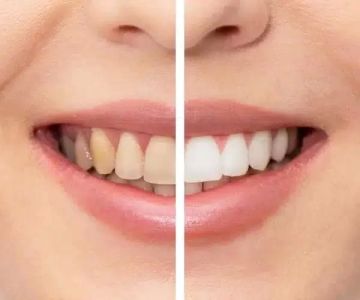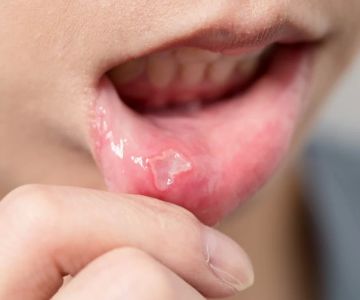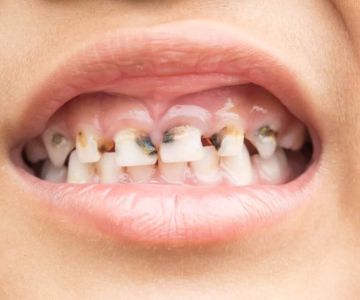
- Understanding Tooth Infections and Their Risks
- Immediate Home Remedies for Tooth Infections
- Pain Relief Methods at Home
- When to See a Dentist for Tooth Infection
- Precautions and Preventive Care
- Real-Life Experiences and Advice
- Trusted Sources for Tooth Infection Care
1. Understanding Tooth Infections and Their Risks
A tooth infection occurs when harmful bacteria invade the inner parts of a tooth, usually the pulp, causing inflammation and pus buildup. This infection can result from untreated cavities, cracked teeth, or dental trauma. Understanding the seriousness of a tooth infection is crucial, as it can spread to other parts of the body if left untreated.
1.1 Causes and Symptoms
The primary causes include poor dental hygiene, prolonged untreated decay, or gum disease. Symptoms often manifest as throbbing pain, swelling, sensitivity to hot or cold, bad taste in the mouth, and sometimes fever.
1.2 Risks of Ignoring a Tooth Infection
Delaying treatment may lead to abscess formation, bone loss, or systemic infections like cellulitis. Therefore, knowing how to treat a tooth infection at home is important for initial relief but not a substitute for professional care.
2. Immediate Home Remedies for Tooth Infections
When a tooth infection strikes, immediate action can alleviate discomfort and slow progression. Here are practical home remedies:
2.1 Saltwater Rinse
Rinsing the mouth with warm saltwater several times a day helps reduce bacteria, soothes inflamed gums, and draws out some pus. Dissolve half a teaspoon of salt in eight ounces of warm water and gently swish for about 30 seconds.
2.2 Cold Compress Application
Applying a cold compress to the cheek near the infected area reduces swelling and numbs pain. Use a clean cloth wrapped around ice packs, applying it intermittently for 15 minutes.
2.3 Clove Oil Use
Clove oil is a natural antiseptic and analgesic. Applying a small amount to the affected tooth with a cotton swab can provide temporary pain relief and reduce bacterial activity.
3. Pain Relief Methods at Home
Managing pain is often the immediate concern with tooth infections. Here are several strategies that can be safely applied at home:
3.1 Over-the-Counter Medications
Non-prescription painkillers such as ibuprofen or acetaminophen help reduce pain and inflammation. It is important to follow the recommended dosage and consult a healthcare professional if uncertain.
3.2 Herbal Remedies
Herbs like peppermint and turmeric have anti-inflammatory properties. Drinking peppermint tea or making a turmeric paste to apply near the affected area may complement other treatments.
3.3 Proper Rest and Hydration
Allowing the body to rest and staying hydrated supports the immune system’s fight against infection, helping reduce discomfort faster.
4. When to See a Dentist for Tooth Infection
While home treatment can provide temporary relief, professional dental care is essential for fully resolving an infection.
4.1 Warning Signs That Require Immediate Attention
Seek dental care if you experience:
- Severe or worsening pain
- Swelling that spreads to the face or neck
- Fever or chills
- Difficulty swallowing or breathing
- Persistent bad taste or drainage from the mouth
4.2 Treatment Options by Dentists
Dentists may prescribe antibiotics, perform drainage of abscesses, or conduct procedures like root canals or tooth extraction depending on infection severity.
5. Precautions and Preventive Care
Preventing tooth infections is preferable to treatment. Good oral hygiene, regular dental checkups, and avoiding excessive sugar intake reduce infection risk.
5.1 Daily Oral Hygiene Routine
Brushing twice daily with fluoride toothpaste, flossing, and using antibacterial mouthwash helps keep harmful bacteria in check.
5.2 Regular Dental Visits
Professional cleanings and early cavity detection prevent infections before they start.
6. Real-Life Experiences and Advice
Jessica’s story illustrates the dangers of delaying dental care. She initially treated her tooth infection at home with saltwater rinses and painkillers but ignored persistent symptoms. Eventually, the infection worsened, requiring emergency extraction and antibiotics.
In contrast, Tom experienced a minor tooth infection that responded well to early home remedies combined with a prompt dental visit. His quick action prevented severe complications.
These cases underline that home treatment can be helpful but professional assessment is indispensable.
7. Trusted Sources for Tooth Infection Care
If you are looking for reliable dental products or expert guidance, Dentistry Toothtruth offers a comprehensive range of tools and professional services designed to support your oral health journey. Their curated recommendations ensure that you get the most effective solutions for treating and preventing tooth infections.
Using trusted resources and seeking timely care will help you manage tooth infections safely and maintain a healthy smile.







 Westgate Dental Arts
Westgate Dental Arts Coventry Family Dental
Coventry Family Dental Familia Dental
Familia Dental Dr. Daniel S. Fife, DDS
Dr. Daniel S. Fife, DDS Dentistry At Suburban Square: Michael I. Wollock, DMD
Dentistry At Suburban Square: Michael I. Wollock, DMD Comfort Care Dental
Comfort Care Dental The Importance of Oral Health Education During Pregnancy for a Healthy Pregnancy
The Importance of Oral Health Education During Pregnancy for a Healthy Pregnancy Why Skipping Dental Checkups Can Lead to Bigger Oral Health Problems
Why Skipping Dental Checkups Can Lead to Bigger Oral Health Problems Advantages of Porcelain Dental Restorations
Advantages of Porcelain Dental Restorations Best Tips for Brushing Your Teeth Properly for Healthy Gums: Essential Techniques for Oral Health
Best Tips for Brushing Your Teeth Properly for Healthy Gums: Essential Techniques for Oral Health How Can Diabetes Cause Tooth and Gum Problems? Preventing and Managing Oral Health Issues
How Can Diabetes Cause Tooth and Gum Problems? Preventing and Managing Oral Health Issues Healthy Habits for Promoting Good Oral Health and Hygiene: Tips for a Healthy Smile
Healthy Habits for Promoting Good Oral Health and Hygiene: Tips for a Healthy Smile